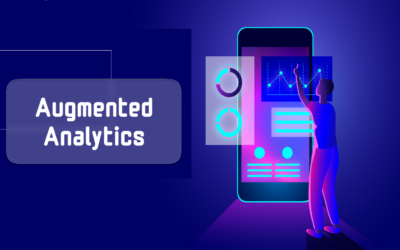What is big data and how does it matter?

Have you ever thought of harnessing the power of big data to revolutionize your business?
Big Data is the term used to describe the enormous amount of organized and unstructured data that is produced daily by people, businesses, and technological gadgets. This information can come from a variety of places, including social media, e-commerce, search engines, and Internet of Things (IoT) devices. It is challenging to collect, store, and evaluate this data using conventional data processing methods and technology due to its immense scale.
Big Data is becoming a crucial business asset that is applied across many sectors to spur innovation and enhance decision-making. Big Data, for instance, can be utilized in the healthcare sector to find trends in patient health data, enabling healthcare professionals to customize treatments and enhance patient outcomes. Big Data can be used in the financial sector to identify fraud and lower the risk of financial crimes.
Big Data’s three distinguishing traits are its volume, variety, and velocity. The term “volume” describes the enormous amount of data that is produced and kept; according to some projections, the volume of Big Data will exceed 44 zettabytes by 2040. Variety describes the various data types that are produced, such as text, photos, videos, and audio. When referring to velocity, it is important to note that some data sources provide millions of data points each second. Organizations employ a variety of technologies and tools, including Hadoop, Spark, NoSQL databases, and data lakes, to manage Big Data. Through the processing and real-time analysis of massive amounts of data, these tools enable enterprises to spur innovation and enhance business outcomes.
Why is Big Data important?
Due to the exponential development in the volume of data produced and kept by individuals, businesses, and devices in recent years, big data has become more and more significant. This data is a vital asset for firms because it can offer insightful information on consumer behavior, market trends, and operational effectiveness. Making data-driven decisions is one of the key benefits of using big data for organizations. Organizations can handle and analyze enormous amounts of data in real time with the correct tools and technologies, giving them important insights into consumer behavior, market trends, and operational performance. Decision-making and innovation can then be influenced by this knowledge.
Big Data is crucial because it helps businesses to customize the client experiences they provide. Organizations can better understand customer preferences, behavior, and needs by studying customer data. Following that, this data can be utilized to develop targeted marketing efforts, enhance customer support, and foster repeat business.
Big Data may also help firms save money and become more efficient. Organizations can uncover inefficiencies and areas for improvement by evaluating operational data, which enables them to optimize processes and cut expenses. Particularly in sectors like manufacturing, where the cost of raw materials and energy can have a big impact on profit margins, this might result in large savings.
Last but not least, big data has the ability to spur innovation across numerous industries. Big Data, for instance, can be used to identify fraud and lower the risk of financial crimes in the financial services sector as well as the healthcare sector to find novel therapies and cures for diseases.
How does Big Data work?
Big data is the term used to describe the enormous volume of organized and unstructured data produced by numerous sources, including social media, online shopping, sensors, and mobile devices. The volume, complexity, and diversity of this data prevent its processing and analysis by conventional data processing techniques. Organizations employ big data technology and tools to manage and gain useful insights from huge data. Data is first gathered from many sources, then collected and stored in massive data storage systems like Hadoop Distributed File System (HDFS). The data is then pre-processed in order to clean, convert, and standardize it before analysis.
Predictive modeling, machine learning, and other operations are performed on the pre-processed data using big data analytics technologies like Apache Spark, Apache Storm, and Apache Hadoop. The outcomes of these activities are then applied to generate new knowledge and reach defensible decisions. To make the output easier to interpret for non-technical users, data visualization tools like Tableau, QlikView, and Power BI can be used. Real-time analysis is another benefit of big data technologies, allowing businesses to react swiftly to shifting market conditions and consumer preferences.
The employees tasked with maintaining and interpreting the data will ultimately determine the commercial value and benefits of big data efforts. Some big data technologies reduce the need for hardware and distributed software expertise by allowing fewer technical people to run predictive analytics applications or assist enterprises in deploying a suitable infrastructure for big data initiatives.









